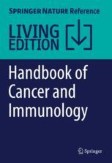Search
Search Results
-
Macrophage subsets and their role: co-relation with colony-stimulating factor-1 receptor and clinical relevance
Macrophages are one of the first innate immune cells to reach the site of infection or injury. Diverse functions from the uptake of pathogen or...

-
Granulocyte macrophage colony stimulating factor exerts dominant effects over macrophage colony stimulating factor during macrophage differentiation in vitro to induce an inflammatory phenotype
BackgroundMacrophages (M φ ) can exist along a spectrum of phenotypes that include pro-inflammatory (M1) or anti-inflammatory (M2) immune cells. M φ ...

-
Colony-stimulating factor 1 receptor signaling in the central nervous system and the potential of its pharmacological inhibitors to halt the progression of neurological disorders
Colony Stimulating Factor-1 (CSF-1)/Colony Stimulating Factor-1 Receptor (CSF-1R) signaling axis plays an essential role in the development,...

-
Patients with restless legs syndrome exhibit reduced serum colony-stimulating factor-1, humanin-like 3 and 10 levels
ObjectiveThe main pathophysiological mechanisms in restless legs syndrome (RLS) are known as genetic predisposition, brain iron deficiency, and...

-
Effect of granulocyte colony-stimulating factor on toxicities after CAR T cell therapy for lymphoma and myeloma
Chimeric antigen receptor T cells (CAR T) are groundbreaking therapies but may cause significant toxicities including cytokine release syndrome...

-
Efficacy and safety of granulocyte–macrophage colony-stimulating factor (GM-CSF) antibodies in COVID-19 patients: a meta-analysis
ObjectiveThis study aims to determine the efficacy and safety of granulocyte–macrophage colony-stimulating factor (GM-CSF) antibodies in COVID-19...

-
Filgrastim, a Recombinant Form of Granulocyte Colony-stimulating Factor, Ameliorates 3-nitropropionic Acid and Haloperidol-induced Striatal Neurotoxicity in Rats
Striatal neurotoxicity is the pathological hallmark for a heterogeneous group of movement disorders like Tardive dyskinesia (TD) and Huntington’s...

-
Granulocyte-colony stimulating factor does not prevent in vitro cisplatin-induced germ cell reduction in immature human and mouse testis
BackgroundCurrently there are no established fertility preservation options for pre-pubertal boys facing cancer treatment. Granulocyte-colony...

-
T Helper Cells Producing Granulocyte-Macrophage Colony Stimulating Factor as a Risk Marker for Coronary Heart Disease
Coronary heart disease (CHD) is related to aberrant aggregation of immune cells in the plaques. This study focused on identification of abnormal T...
-
Granulocyte-colony stimulating factor (G-CSF): an emerging therapeutic approach for amyotrophic lateral sclerosis (ALS)
Amyotrophic lateral sclerosis (ALS) is a neurodegenerative disorder characterized by neuronal degeneration and inflammation in the nerves. G-CSF is a...

-
Granulocyte colony-stimulating factor (G-CSF) enhances cocaine effects in the nucleus accumbens via a dopamine release–based mechanism
Cocaine use disorder is associated with alterations in immune function including altered expression of multiple peripheral cytokines in...

-
Formulation and In Vitro Characterization of PLGA/PLGA-PEG Nanoparticles Loaded with Murine Granulocyte-Macrophage Colony-Stimulating Factor
Granulocyte-macrophage colony-stimulating factor (GM-CSF) has demonstrated notable clinical activity in cancer immunotherapy, but it is limited by...

-
A clinical study of pegylated recombinant human granulocyte colony stimulating factor (PEG-rhG-CSF) in preventing neutropenia during concurrent chemoradiotherapy of cervical cancer
PurposeTo evaluate the effectiveness and safety of pegylated recombinant human granulocyte colony stimulating factor (PEG-rhG-CSF) in preventing...

-
Sintilimab, stereotactic body radiotherapy and granulocyte–macrophage colony stimulating factor as second-line therapy for advanced non-small cell lung cancer: safety run-in results of a multicenter, single-arm, phase II trial
ObjectivesThe SWORD trial is the first multicenter, single arm, phase II study assessing the safety and efficacy of a PD-1 inhibitor (Sintilimab),...

-
Randomized and dose-escalation trials of recombinant human serum albumin /granulocyte colony-stimulating factor in patients with breast cancer receiving anthracycline-containing chemotherapy
BackgroundTo evaluate the efficacy and safety of recombinant human serum albumin /granulocyte colony-stimulating factor (rHSA/G-CSF) in breast cancer...

-
Tumor necrosis factor receptor-associated factor 5 protects against intimal hyperplasia by regulation of macrophage polarization via directly targeting PPARγ
ObjectivesIntimal hyperplasia is a serious clinical problem associated with the failure of therapeutic methods in multiple atherosclerosis-related...

-
Evaluation of Structural, Biological, and Functional Similarity of Biosimilar Granulocyte Colony Stimulating Factor to its Reference Product
PurposeGranulocyte colony stimulating factor (GCSF; also known as filgrastim) is a growth factor used to induce production of granulocytes. As the...

-
Advances in Therapeutic Targeting of the Tumor Necrosis Factor Receptor Superfamily Members for Cancer Immunotherapy
The tumor necrosis factor receptor superfamily (TNFRSF) is a pivotal immunoregulatory group of receptors involved in almost all aspects of immunity....
-
Advances in the research and application of neurokinin-1 receptor antagonists
Recently, the substance P (SP)/neurokinin-1 receptor (NK-1R) system has been found to be involved in various human pathophysiological disorders...
-
Tumour-derived CSF2/granulocyte macrophage colony stimulating factor controls myeloid cell accumulation and progression of gliomas
BackgroundMalignant tumours release factors, which attract myeloid cells and induce their polarisation to pro-invasive, immunosuppressive phenotypes....

